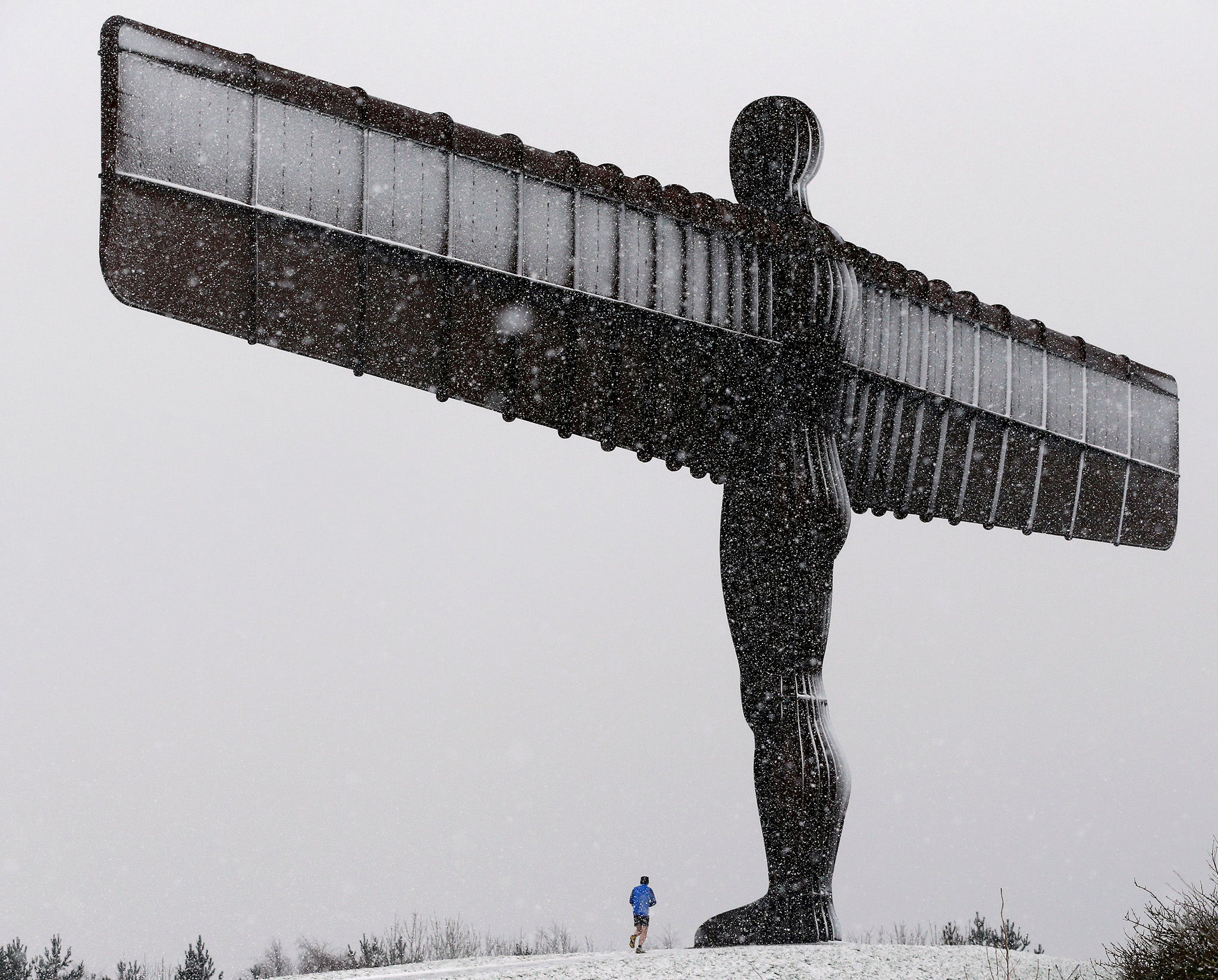In defence of public art - when it's done right
Our writer's two favourite pieces are brilliant, bonkers and worth every penny, but that's not always the case

There's a right old stramash going on in Inverness over plans to install artworks on the banks of the River Ness. The focus of the project (still in the planning stage and costing more than £750,000 of public money) is a sculpture called The Gathering Place, a tilting pier that has been likened to “a giant seesaw”.
The project's aim, the council says, is “to put Inverness on the destination map for art and cultural tourism”, but about 200 residents have registered their objections and the chairman of the arts group on the council has resigned over the plans. I don't have a vote, but if I did, I would be marking my X for the work by the collaborative team of creative studio KHBT and Sans façon; a giant seesaw! What could be more fun?
The Gathering Place joins a long list of public artworks to be vilified - not all of them ugly, and not all of them objected to by philistines or Nimbys. Beauty is, of course, in the eye of the beholder, but three common gripes come through my researches into why people object to public art - cost (particularly in a time of austerity), size and placement.
On the size issue, I quite like a bit of monumentalism. In the right setting, it can add an extra wow factor, so yes to Mount Rushmore's US presidents and Antony Gormley's Angel of the North, set in a field off the A1 near Gateshead; but no to Shane Gilmore's giant limestone cupped hands outside Ennis Cathedral in Ireland. Healing Hands is hideously out of scale next to the Victorian church it sits beside, and really rather unsettling – and jarring the sculptor's message of peace and friendship.
There is also the issue of interpretation. Most public art is commissioned by local authorities, so it would be reasonable, you may think, that a piece not only suits its setting but has some local relevance that those viewing it can appreciate – and they should be able to feel that their council tax has been spent on a thing of beauty, or a piece of art that provokes discussion.
Just like Marmite! Our love-hate affair with public art
Show all 8
Near where I live in south London a sculpture by Peter Logan called Arrows and Obelisk sits unloved (except by dogs) and unnoticed by people shopping at the nearby Tesco, or waiting for buses stopping outside the superstore; a triangular stainless steel shard placed on three huge bronze molluscs, with a mobile of several arrows on the top. No, me neither.
That's not to say public art should be too obvious. Maurice Harron's Hands Across the Divide in Derry/Londonderry - two blokes whose hands are reaching across, well, a divide - is so boringly literal that its message is about as subtle as a punch in the face. Which sort of defeats the point.
Sometimes artists need to be reminded that public art is, strangely enough, for the public. When Tilted Arc, a 36.5 metre-long, 3.6 metre-high rusted steel wall was removed from a New York plaza after multiple complaints, its creator Richard Serra (an artist whose monumental work I adore, if not his monumental ego) was reported as saying: “I don’t think it is the function of art to be pleasing. Art is not democratic. It is not for the people.”`
So I had to laugh when it was announced that AncelorMittal Orbit, Anish Kapoor's hideous £19m (£3m from public funds) sculpture at Olympic Park, is to get a wonderful new addition that he says was foisted on him by Boris Johnson, the departing Mayor of London, who is keen that some money returns to the public purse. “It looks like a giant twisted helter-skelter,” critics of the 114m-high structure said when it was opened in 2012, aghast at the £12 charge to reach its viewing tower.
Well, funny you say that, because now Johnson has insisted that a 178-metre tunnel slide, the longest in the world, should be wrapped around the Orbital. Punters will be charged an extra fiver to hurtle down it, and it has been designed by Carsten Holler - whose installation of metal slides at Tate Modern's Turbine Hall in 2006 introduced a whole new audience to the concept that art can be fun. I shall be one of the first to visit when it opens on 24 June.
If The Gathering Place gets the go-ahead in Inverness, I suspect objectors will eventually be won round (perhaps after they have had a little play on it). After all, Angel of the North was described by some as “bad taste on a vast scale” when it was unveiled but has since become an iconic feature of the landscape - and is still a magnificent, breathtaking sight no matter how many times I see it. I often wonder, though, did some ancient Egyptian complain: “You can't put a blooming great Sphinx there!”
Public art should enhance the space it sits in and two of my favourite pieces not only do that, but also make me laugh out loud every time I see them. They are the Comedy Carpet, Gordon Young's huge artwork of comics' names and catchphrases inlaid into the promenade in Blackpool, and Pierre Vivant's Traffic Light Tree, an 8 metre-tall tree made of 75 computer-controlled traffic lights arranged on metal branches, erected on a roundabout in London's Canary Wharf. Brilliant, bonkers and worth every penny.
Subscribe to Independent Premium to bookmark this article
Want to bookmark your favourite articles and stories to read or reference later? Start your Independent Premium subscription today.

Join our commenting forum
Join thought-provoking conversations, follow other Independent readers and see their replies